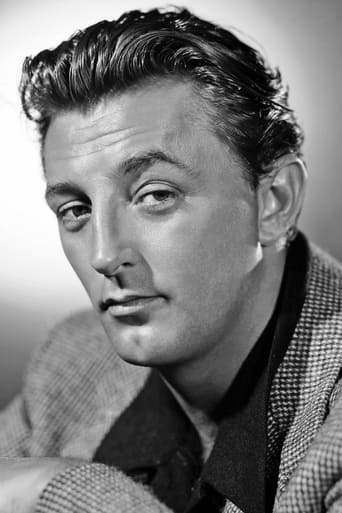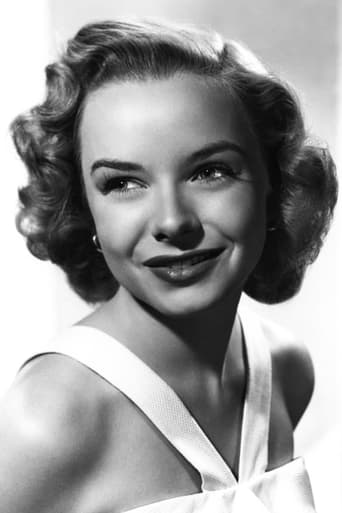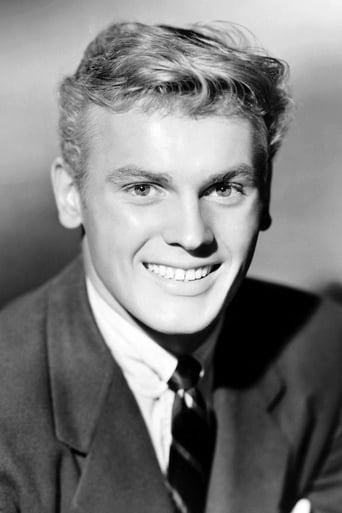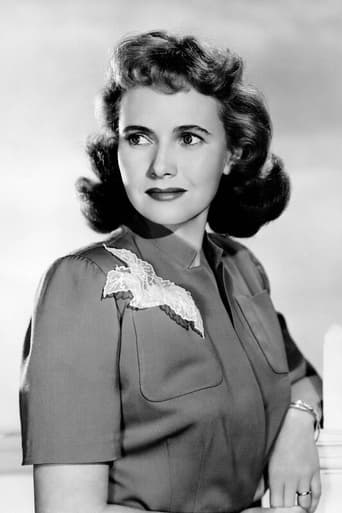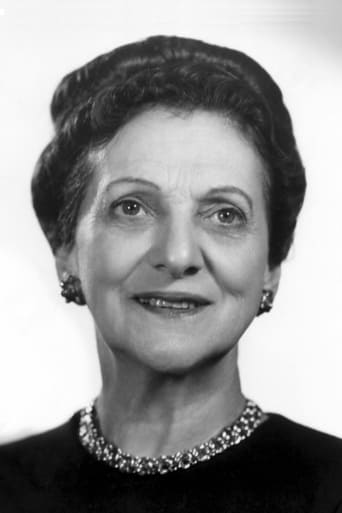Matcollis
This Movie Can Only Be Described With One Word.
Greenes
Please don't spend money on this.
Gutsycurene
Fanciful, disturbing, and wildly original, it announces the arrival of a fresh, bold voice in American cinema.
Ogosmith
Each character in this movie — down to the smallest one — is an individual rather than a type, prone to spontaneous changes of mood and sometimes amusing outbursts of pettiness or ill humor.
ofumalow
What one critic (the NY Times?) called "the first CinemaScope wierdie" is indeed an oddity by 50s major studio standards, though it doesn't quite work even on its own terms. I've no idea what the novel was like, but presumably its Gothic frontier family melodrama worked better in literary than it does cinematic form. Clearly William Wellman was trying for something ambitious and different (partly perhaps a return to the grittiness of his pre-Code features), but the elements never really gel.Mitchum is well-suited to his character, who goads, bullies and belittles everyone around him, but one of the off-putting things about this movie is that he's still the nominal PROTAGONIST-he's not a villain as in "Night of the Hunter" or "Cape Fear," but our principal figure. Getting about as much screentime is Tab Hunter's little brother, but it becomes rather tedious that the whole focus of HIS character is whether he's going to let himself be completely emasculated by his guilt-tripping ma and bullying oldest sibling. (Apparently Mitchum has all the testosterone this family was allowed.) It's anyone's guess why they cast Our Gang's Alfalfa (who was in his 20s at the time) as an ancient "Injun" who speaks little yet knows all, but in any case that decision only makes the role seem more a bizarre and unconvincing contrivance. He's on the far wrong end of a cast scale that divides pretty much down the middle between theatrically melodramatic turns (Bondi, Tonge, Wright) and more effective low-key, naturalistic ones (Hunter, Hopper, Lynn). The look is striking-almost entirely "black and white in color," with stark compositions reflecting the stark rural winter setting-yet it's jarring that vivid location shooting (which Mitchum called the hardest of his career) smacks up against the obvious studio-soundstage set of the family's homestead. It's an artificial movie in ways that are interesting, yet it's actually not artificial ENOUGH to pull off this eccentrically austere (in aesthetic) yet florid (in character behaviors) enterprise on its own terms. A big, conventional, overactive orchestral score tends to work against the film's idiosyncrasies rather than supporting them. "Cat" would have probably worked better as a B&W independent feature-as admirably unusual as it is by mid-50s major studio standards, it's the stubborn residual major-studio gloss that keeps it from being as potent as it means to be. (I mean really, would an isolated 1890s Colorado ranch house be this roomy and spotless? Must all the clothes look brand new?) The result is all a little dull and uninvolving, with too much of the rather turgid infighting on the ranch for us to get caught up in Mitchum's solo quest for the killer wildcat in the mountains. I'm glad to have finally seen it, but the truth is "Cat" was considered a pretentious misfire then, and it still is one.
mark.waltz
Almost an old dark house film set way up in Northern California, this somber drama is an analogy of good and evil, control and bitterness. The story concerns the Bridges clan, a truly unhappy family filled with resentments. Pa is a drunk; Ma is a bible thumping hypocrite. The three sons are in constant conflict, while the only daughter has become a dried up spinster. With the youngest son's fiancée visiting, resentments are at their peak. To make matters worse, an unseen wildcat has been stalking their livestock, so the two oldest sons venture out into the wilderness to kill it. This is not O'Neill, Inge or even updated Shakespeare, even if it seems like a filmed stage play. There is a bit of a "Petrified Forest" feeling to it with the cat taking on Bogart's role, metaphorically holding these people hostage. Carl Switzer is totally unrecognizable as the aged Indian handyman. The performances of the others range from weak (Tab Hunter) to melodramatic (Teresa Wright), with Beulah Bondi standing out as the mother with many layers to her character. As for Robert Mitchum, his imperious character is a fascinating look at a man consumed with controlling his siblings, and the lecherous look he gives Diana Lynn (as Hunter's fiancée) gives the impression that he intends to break one of the ten commandments.The real star of the film, however, is the beautiful Technicolor cinematography, with flashes of color appearing in the snow like a distant star in the sky. Mitchum's red coat is so blatantly blood-like it is almost a metaphor for his character. While based upon a novel, the story seems like an old melodrama from the golden age of traveling theater companies. In many ways, it reminded me of "Mourning Becomes Electra" and some recent western film noirs ("Pursued", also with Mitchum), and "The Furies" (in which Beaulah Bondi had a brief role), as well as "House of Strangers" and its 1954 remake, "Broken Lance". The mood of the film will not be for everyone, but if you follow the story closely and are not put off by its sometimes slow pacing, you may find yourself fascinated by it.
thomas196x2000
Oh, a rugged outdoor adventure that I had never heard of--with Robert Mitchum hunting a bad killer cat ...I was looking forward to it! Well there is a reason few people have heard of it...this movie is terrible! I mean, this is the type of movie where you keep on thinking it's going to get better, but it never does.Mitchum's family is losing livestock, then lives, to some big cat. The family calls it a "painter". Don't ask. The old dad of the bunch drinks and says crazy things. Mom is old Beulah Bondi with her weird eyes, quotin' the Good Word and hanging out all day and night with her son's corpse in his bedroom as he rots away. (Don't bother ma, she's corpse-sittin'!) Mitchum found the brother's body, no blood, no nothing, even still has color in his face! Hey, couldn't the makeup folks apply just a little makeup? Look closely and you'll see him shift a little bit after Mitchum puts him on his horse, if you can stand getting that far in this movie.Determined to go get that bad cat, or painter, Bob dons a bright red coat. This is the only color in the outdoor scenes as the director wanted it to look like black and white and shot things in shadows. Don't try to figure that one out.Late in the movie, there's a scene where Mitchum tries to light a fire and the wind keeps blowing out his matches. Finally he gets one going, only to have snow from a tree fall and put it out. It plays almost like a Laurel and Hardy moment.But that is right before the best part--and most action--of the whole movie. Right after he loses his fire, the sun starts coming up, and weeeeeee! Mitchum is so elated he starts running down the mountain side. Then he starts "body skiing". Then, all of a sudden, he falls down a big cliff, screaming like a woman, and is horribly killed. I kid you not.Then handsome Tab Hunter finds his dead body, but hears the cat "growling". He goes behind the bush and kills the cat. We never see that, because this cheesy production must have run out of cash for paying Mitchum so they couldn't afford a fake cat or renting one from a zoo.At the very end, the families old, nutty Indian worker babbles something very Indian-like about what death is all about. Some people don't realize even then that the old Indian is freaking Alfalfa from "Our Gang" in old Indian makeup.No, I am not making that up.One of the worst, slowest moving, dumb "westerns" you will ever see. I think some of the raters here must certainly be offspring of the original dumba%$ producers of this turkey, this rating is way high.
Barney_Beers1947
I liked "Track of the Cat" as a "psychological western" and also thought it could be produced as a stage play. The term "painter" is the way pioneers pronounced the word "panther," as I learned in my Indiana History class. The characters in the story view the cat itself as a supernatural and eternal creature that brings evil, death, and sorrow to the innocence of the valley.I found Joe Sam, the 100-year-old Indian portrayed by Alfalfa Switzer, interesting, mysterious, and downright spooky. Drawing on Native American wisdom and folklore, Joe Sam said the panther always came with the first snow, and he implied the panther was an evil spirit or creature that could not die. As the story progresses, the viewer develops mixed feelings about the old Indian's beliefs, as do the members of the Bridge family. Actually, there is a rational explanation for the panther's arrival in the valley: the cattle, deer, and other game had moved into the valley to search for food and water when the snowfall began. Then the panther, which preyed on such animals, followed them. The old Indian, however, expressed his belief in the panther's immortality when he claimed the "same" panther had killed his wife and daughter during a first snow many years ago.I believe the Indian himself symbolizes the conflicts between (1) life and death (2) the eternal and the temporal, (3) the spiritual world and the physical world, and (4) superstition and rational thought. The Bridge brothers stated the old Indian had been a survivor of a battle between settlers and Indians at least 60 years earlier and that all of the Indian's grown sons had been killed in the battle. They estimated the old Indian was at least 40 when his sons died, so that he had to be over 100 years of age. The old Indian's spryness and ability to lift bodies and heavy objects lead the viewer to believe the Indian himself is eternal.The tragic loss of the old Indian's family foreshadows the likelihood the Bridge family also will die out. Mrs. Bridge, the overly controlling mother, has run off all the marriage prospects her grown children have had, and the brothers fear their generation will not marry and have children. The last marriage prospect is the neighbor Gwen, in whom all the brothers have some interest. However, Mrs. Bridge has met her match as Gwen is determined to marry Harold. In the end, life and love triumph over death when Gwen and Harold decide to leave the ranch, get married, and move to Aspen, the symbol of civilization.Mr. Bridge, the alcoholic father, is a sympathetic and comical character throughout the film, retrieving his whiskey bottles from assorted hiding places throughout the house. From his accent I judge him to be an Irish immigrant from a large city in the U.S. Toward the end of the film, Mrs. Bridge finally admits she had persuaded her husband to move to the isolated ranch where he had felt like a "fish out of water" and had taken to drinking. In the end she does admit to being a catalyst for the dysfunction in the family and accepts Harold's wanting to get married and leave the ranch for Aspen.In the scene where Curt (Robert Mitchum) has the fire go out, I am reminded of "To Build a Fire" by Jack London. There is a sort of naturalism in this scene and throughout the film with its man vs. nature theme. I would recommend this film as a very different sort of western.


